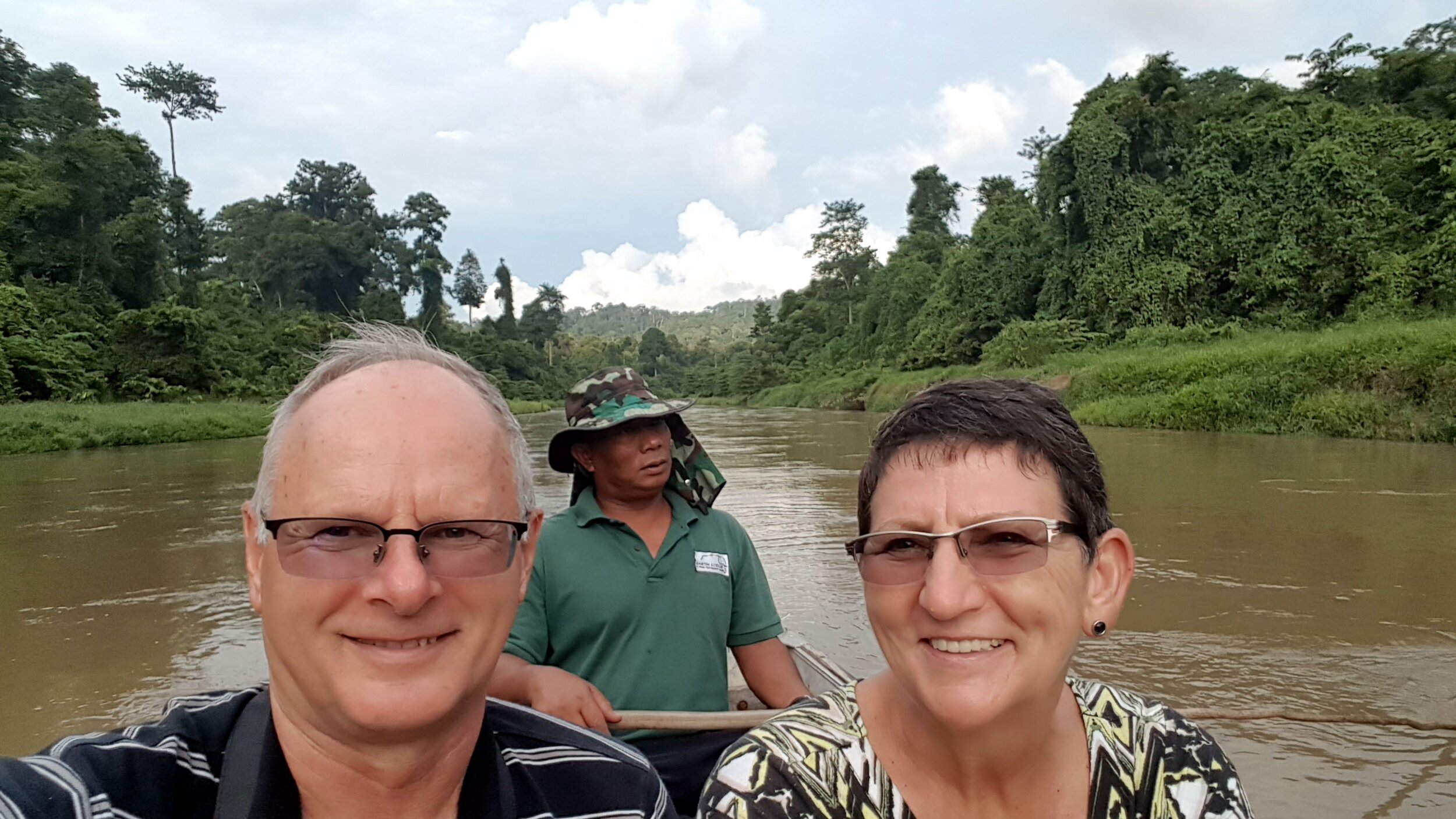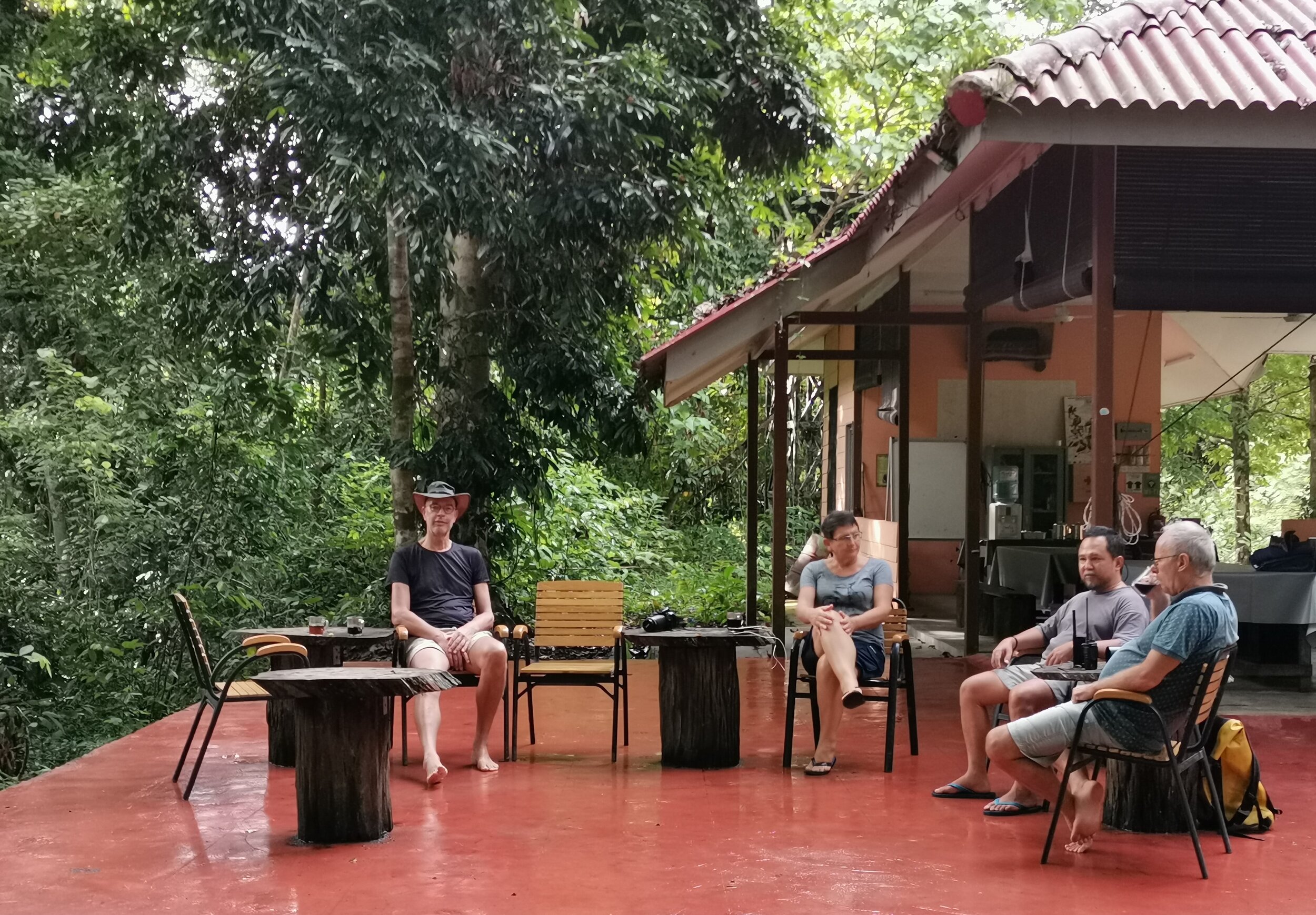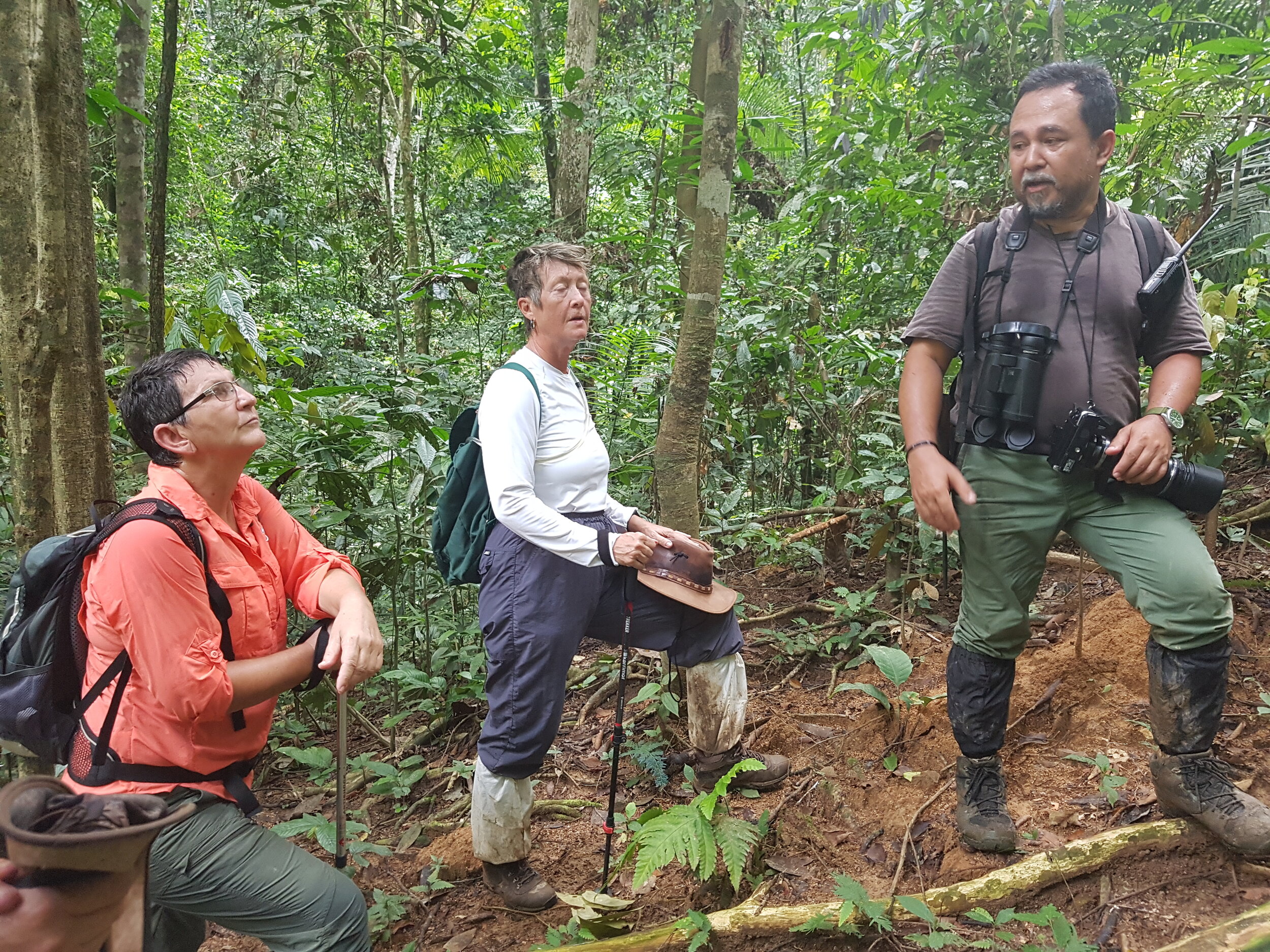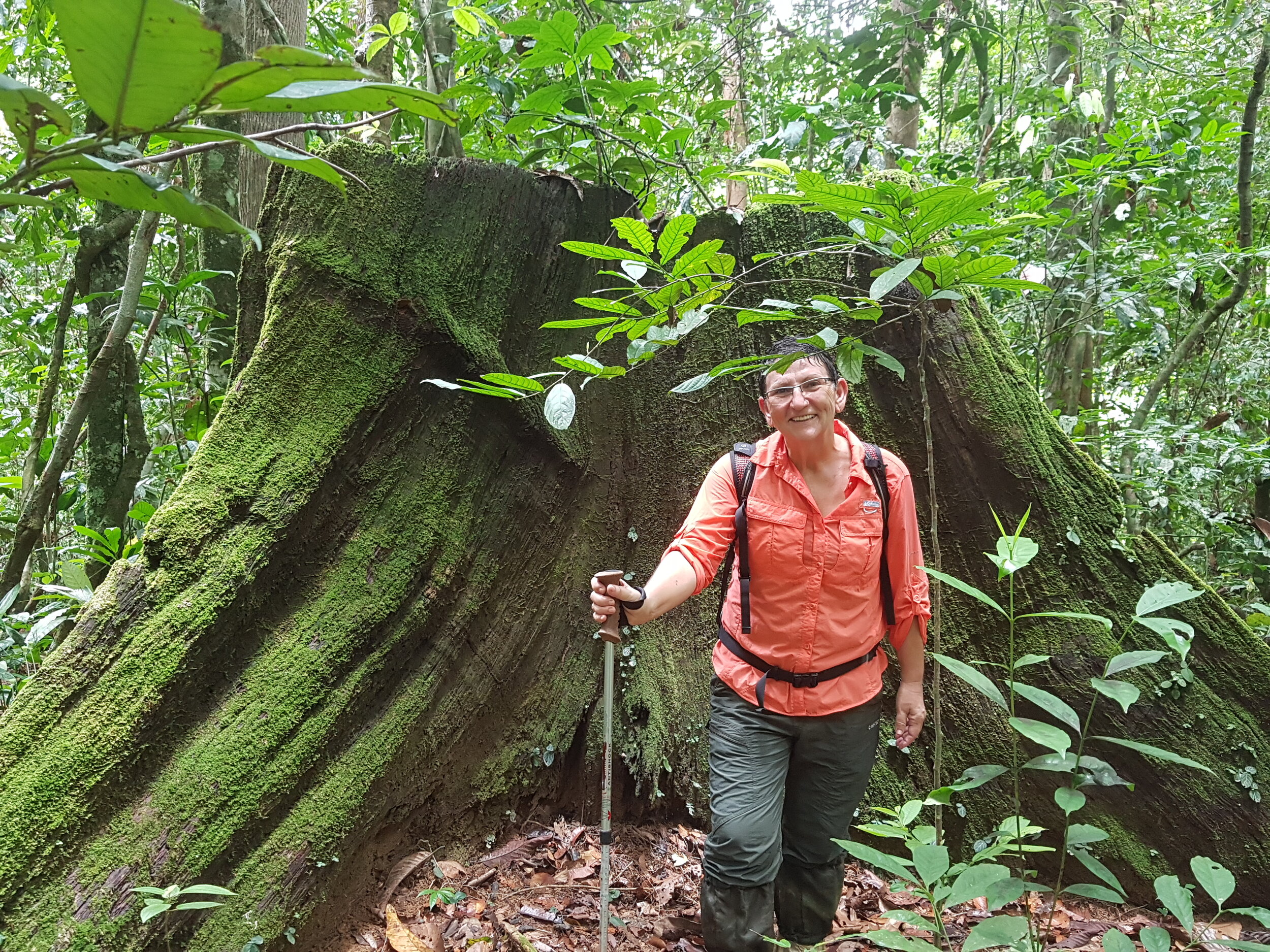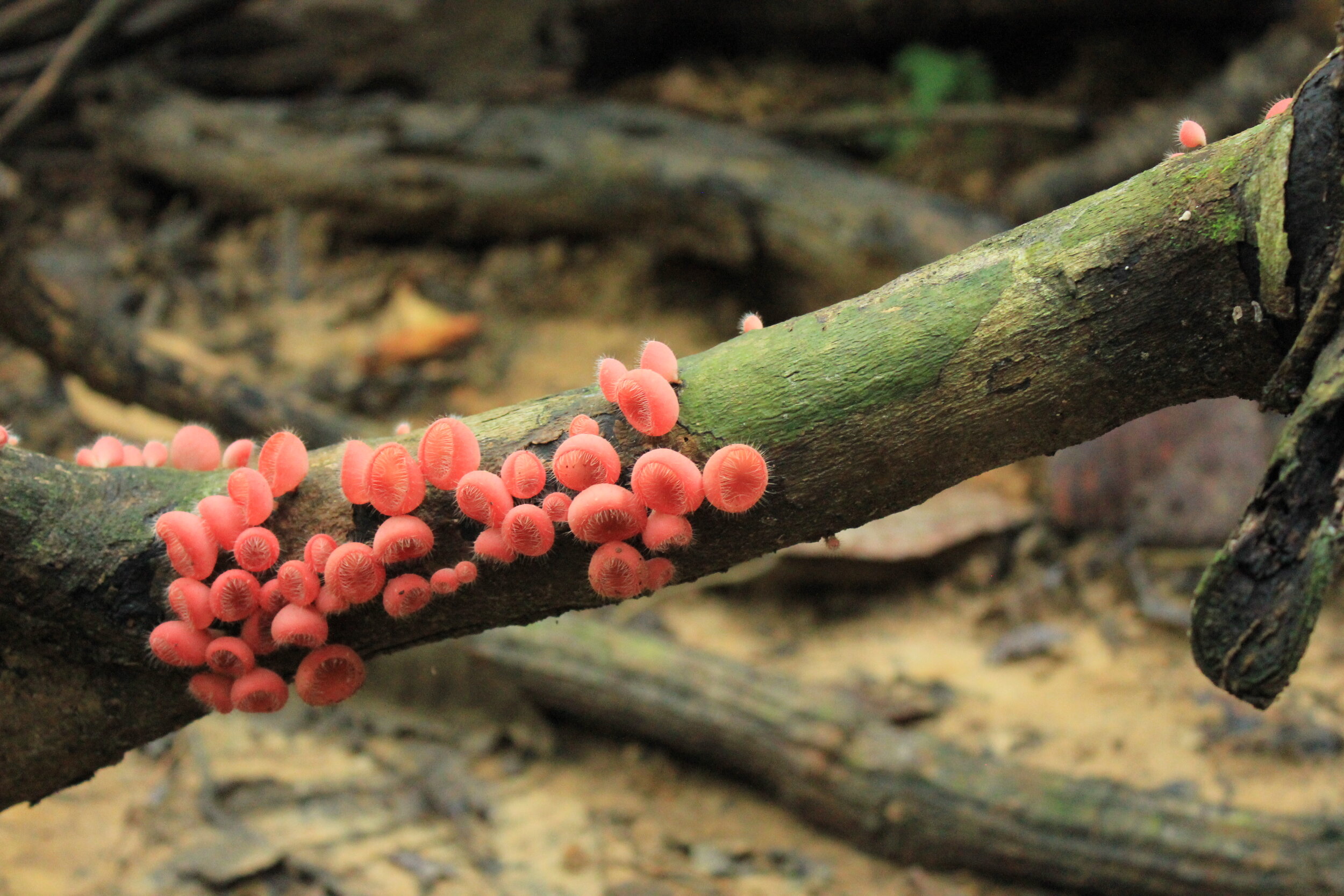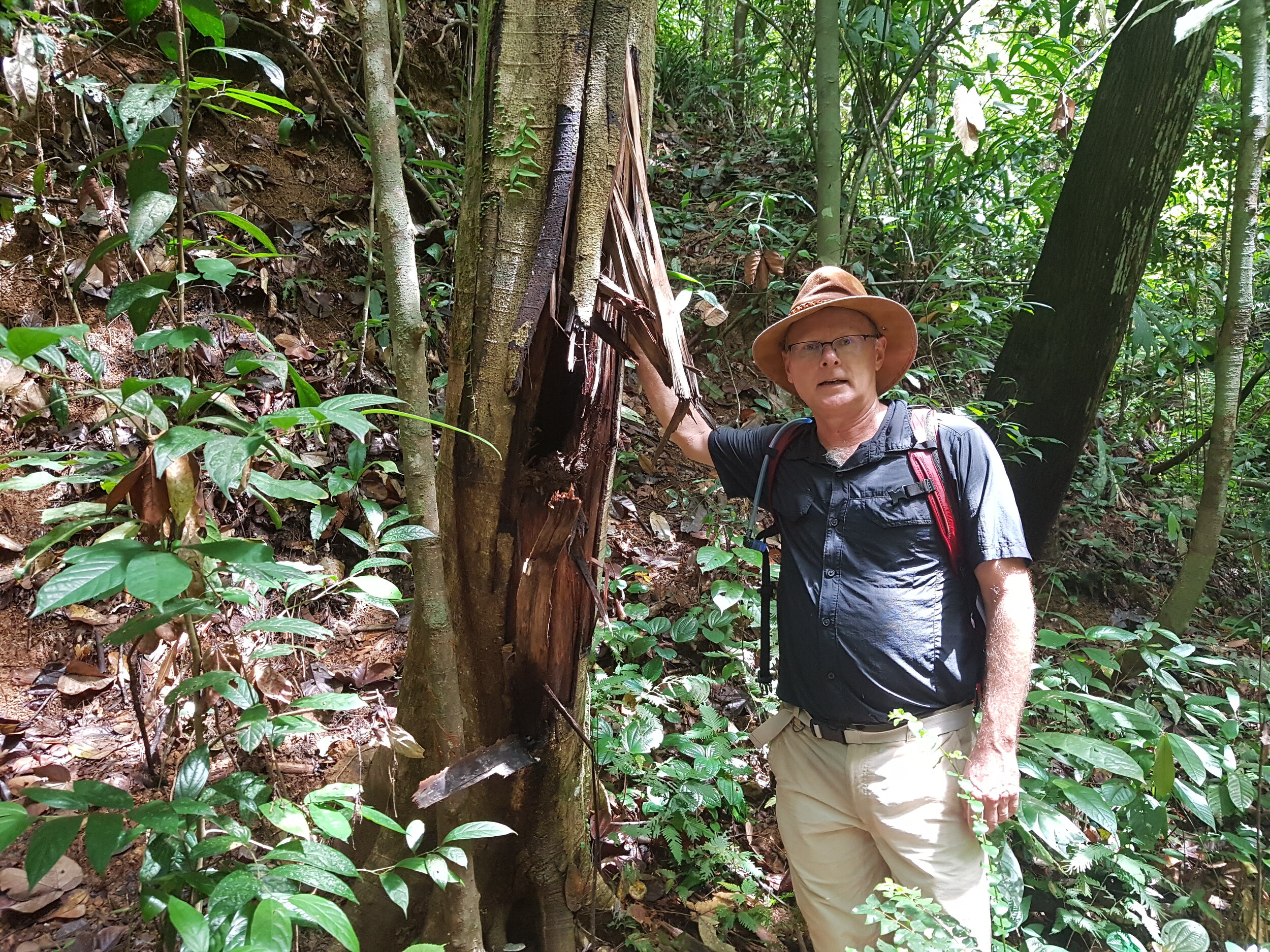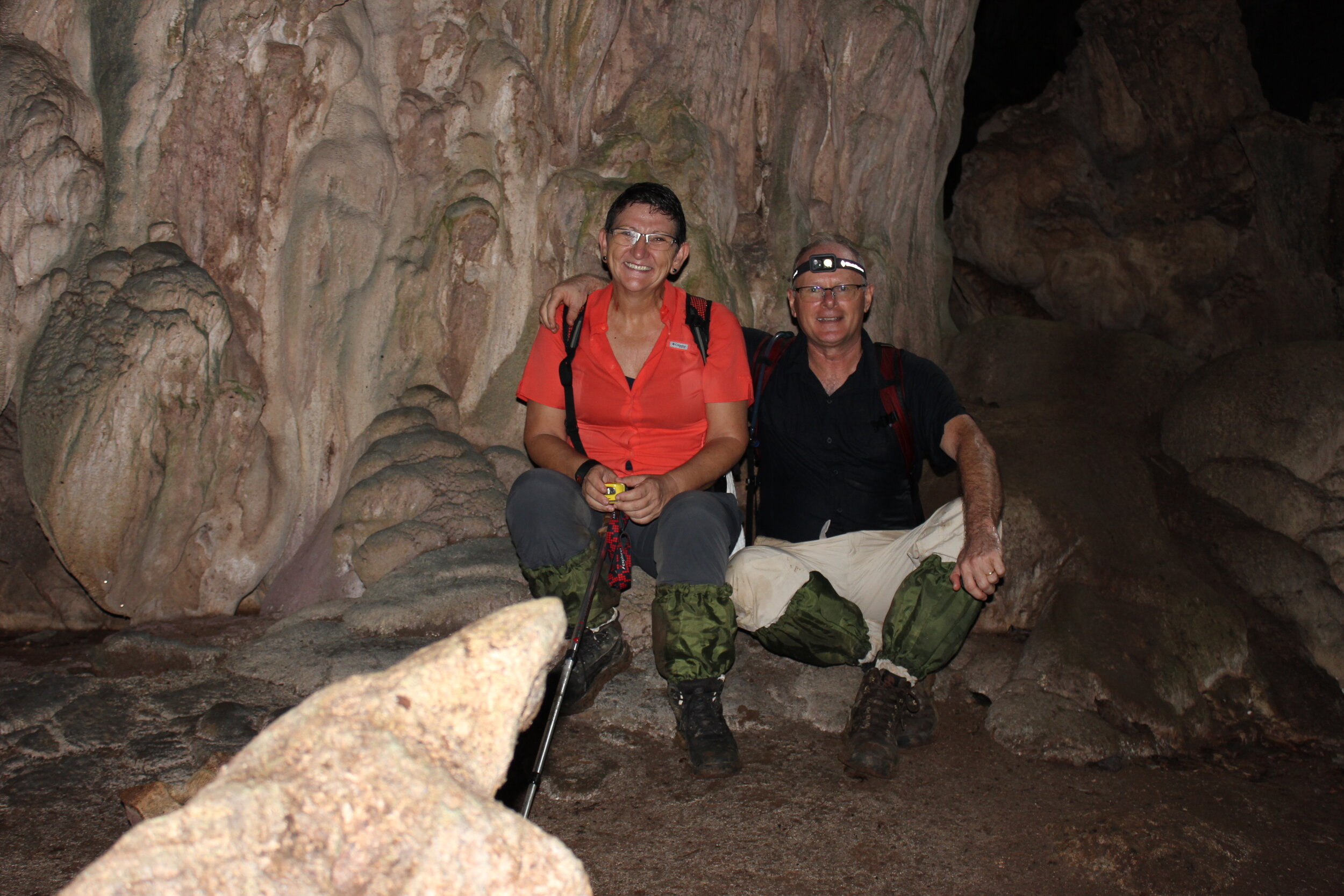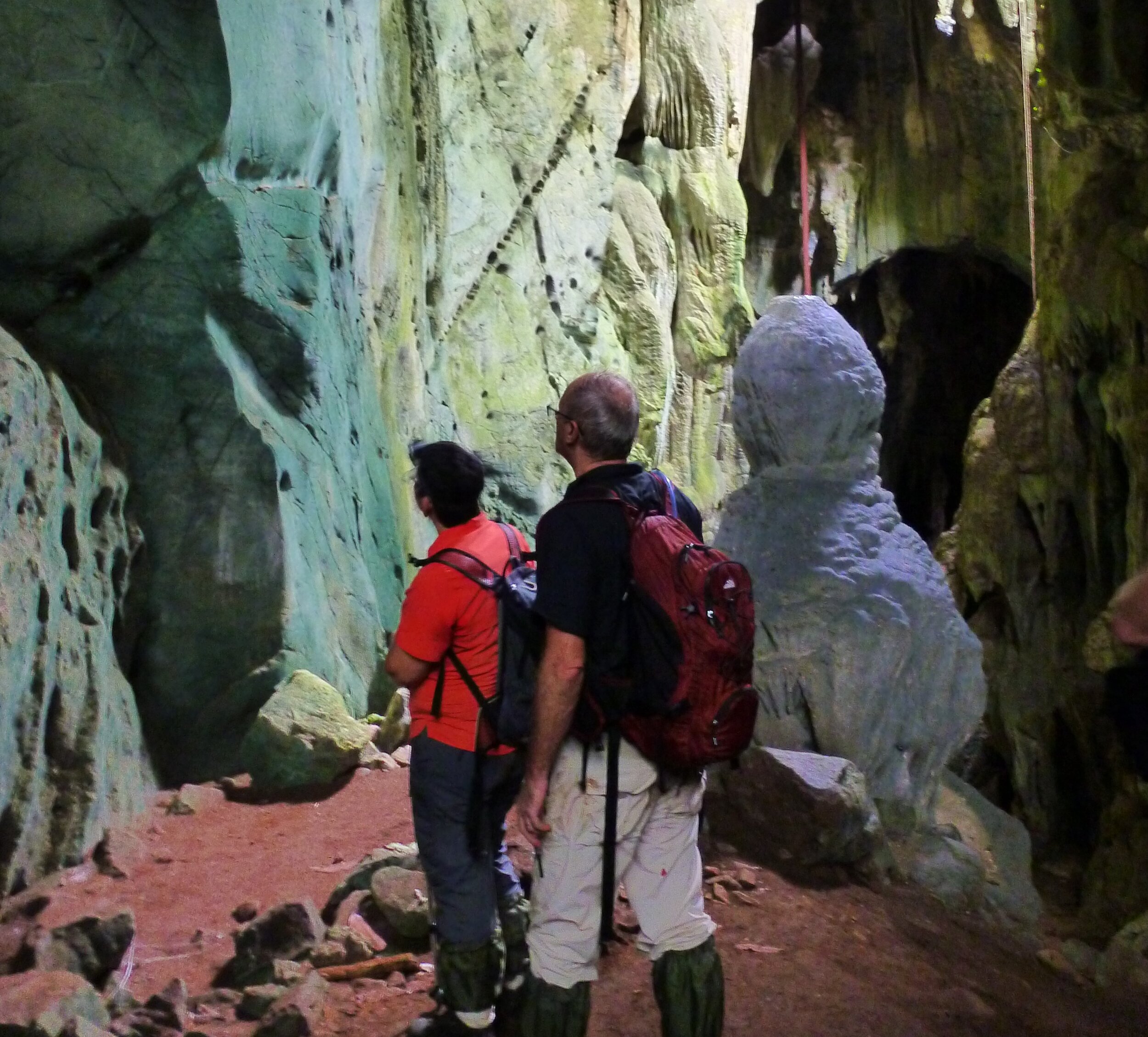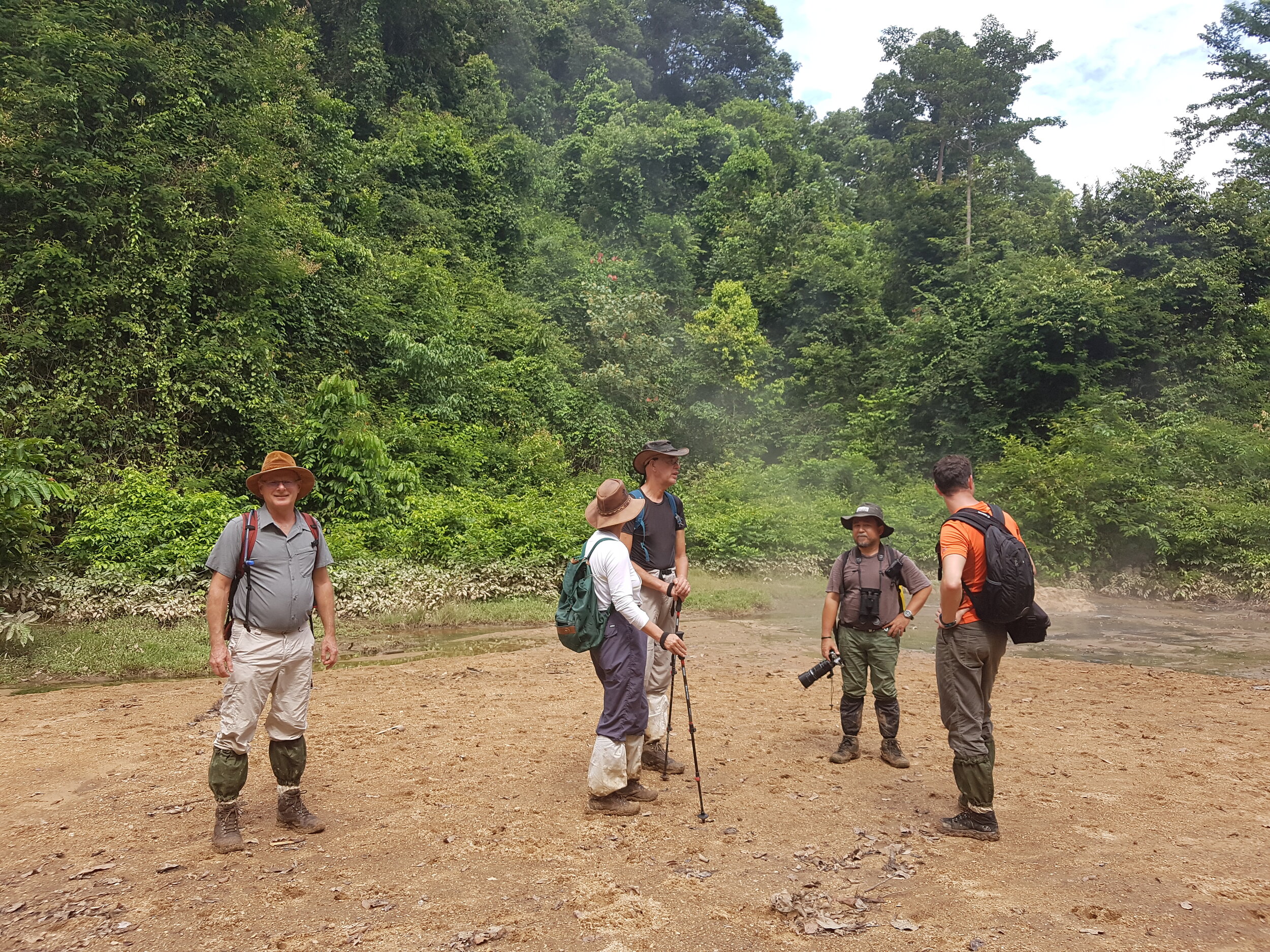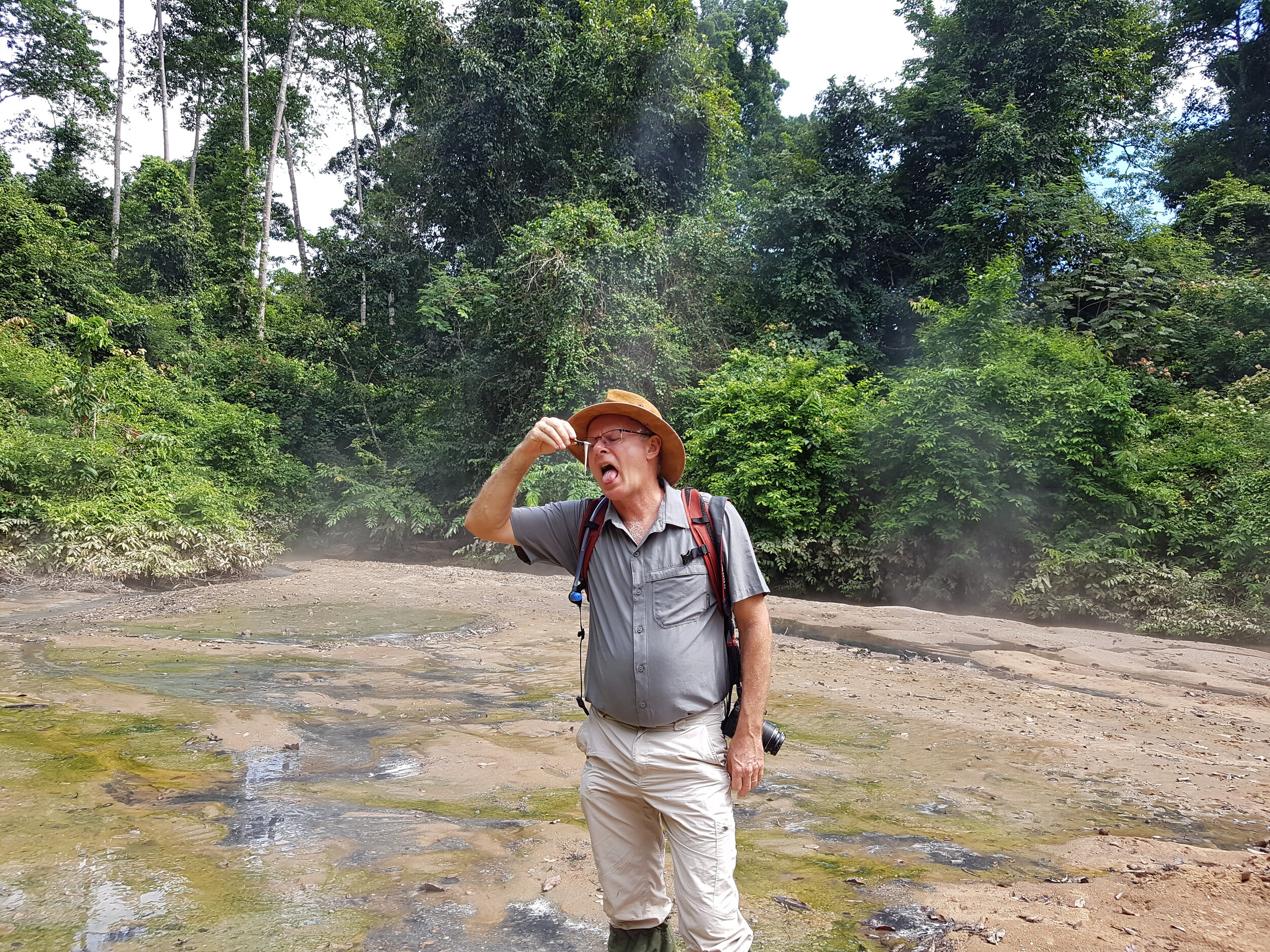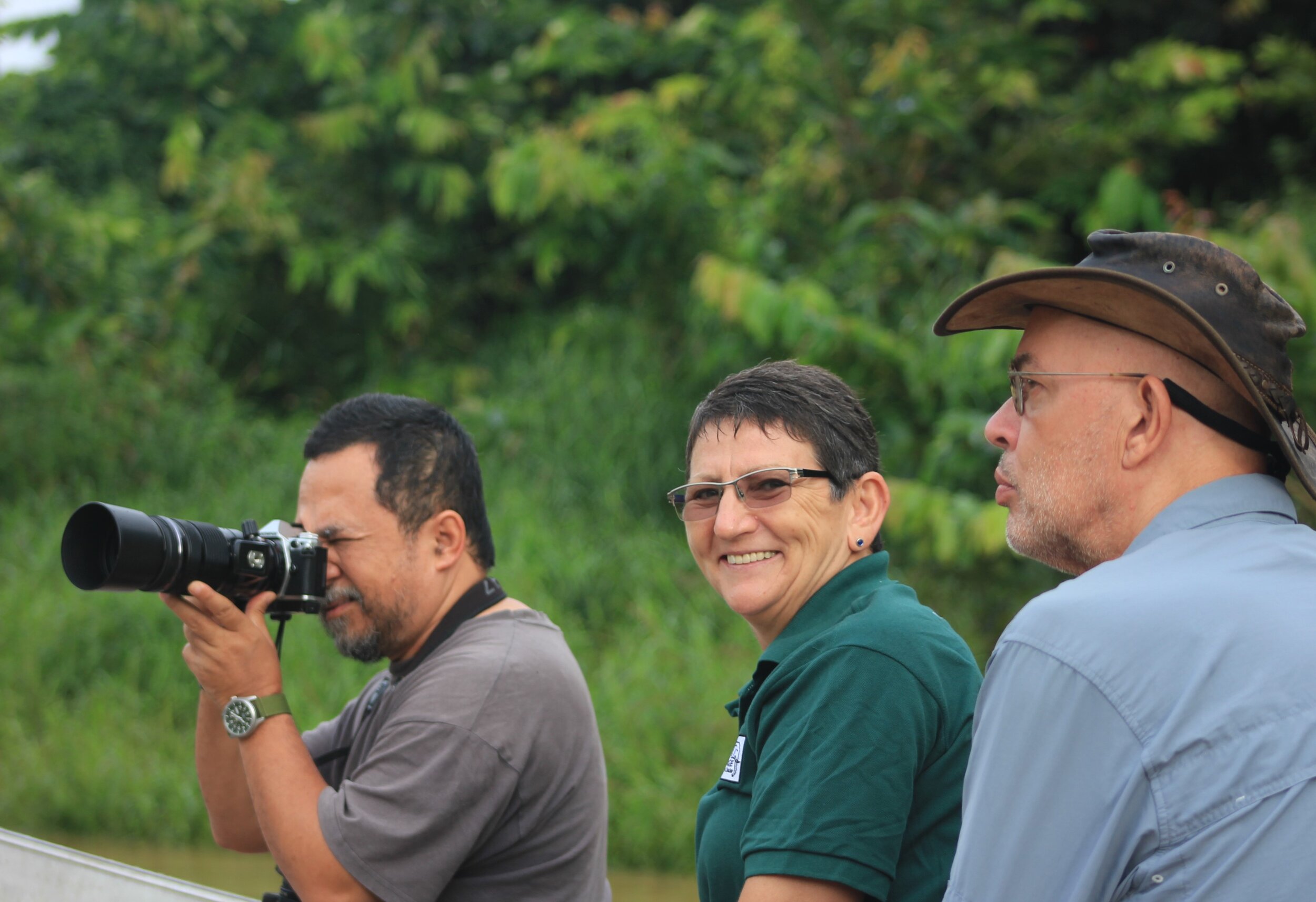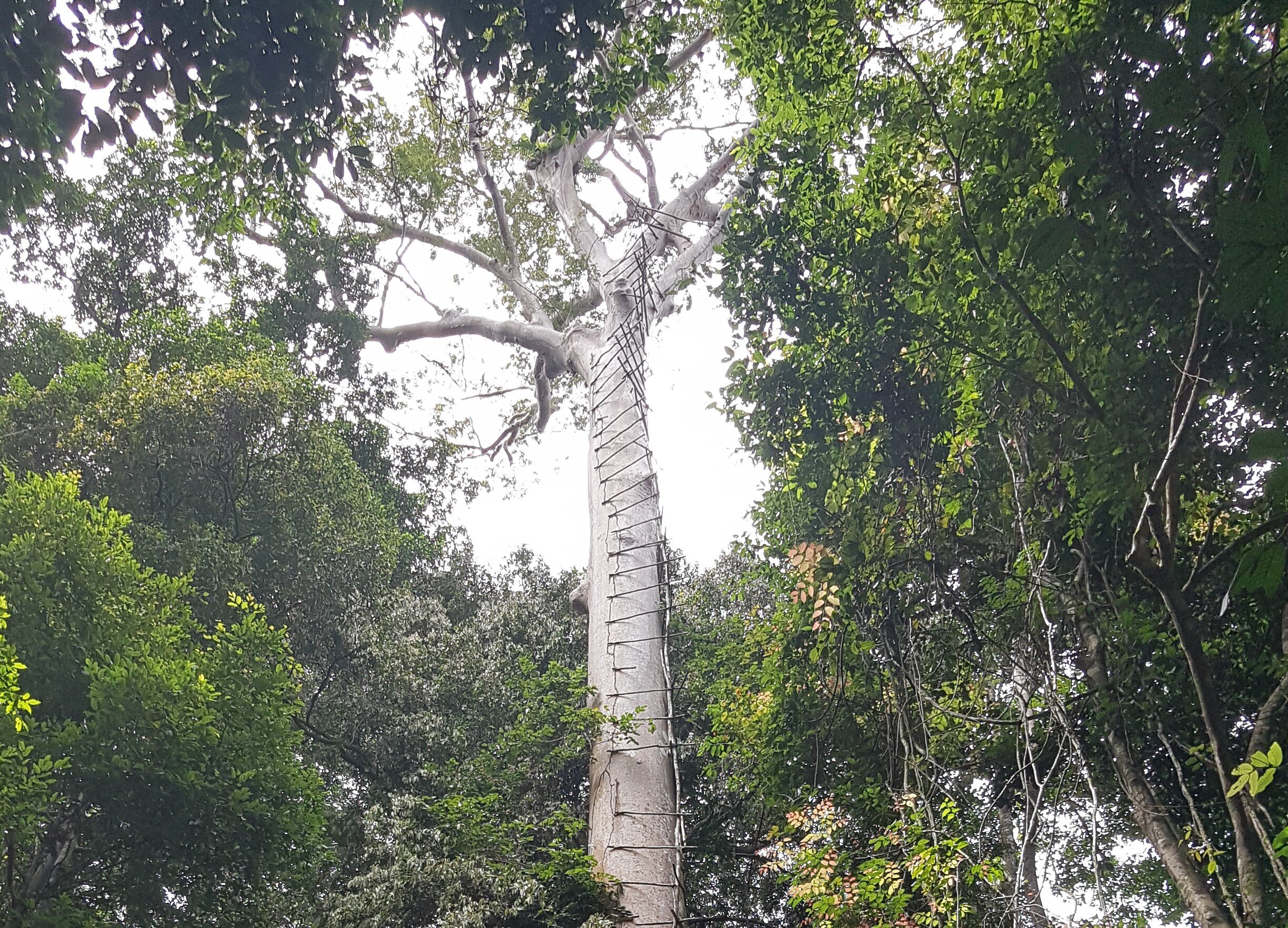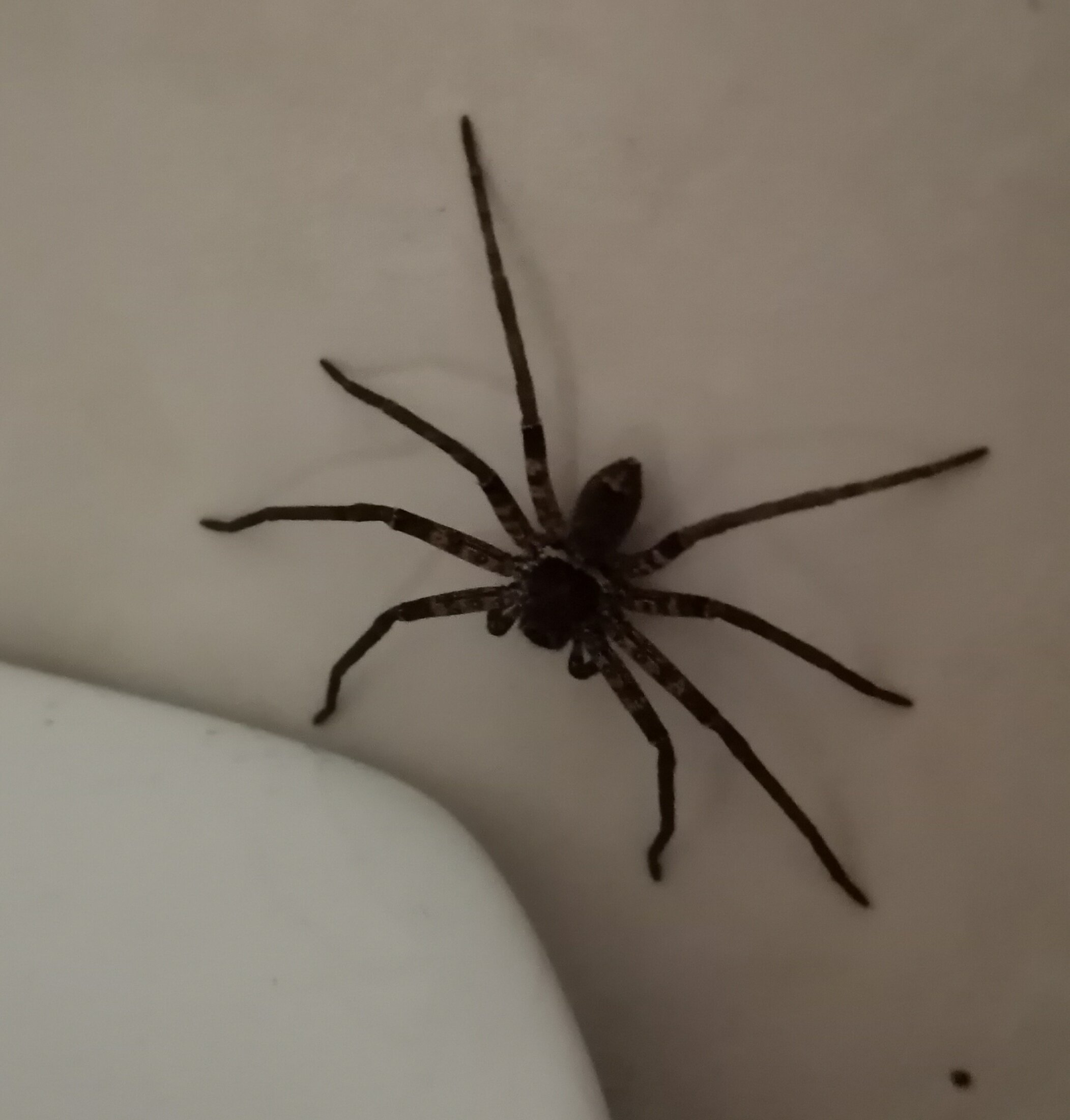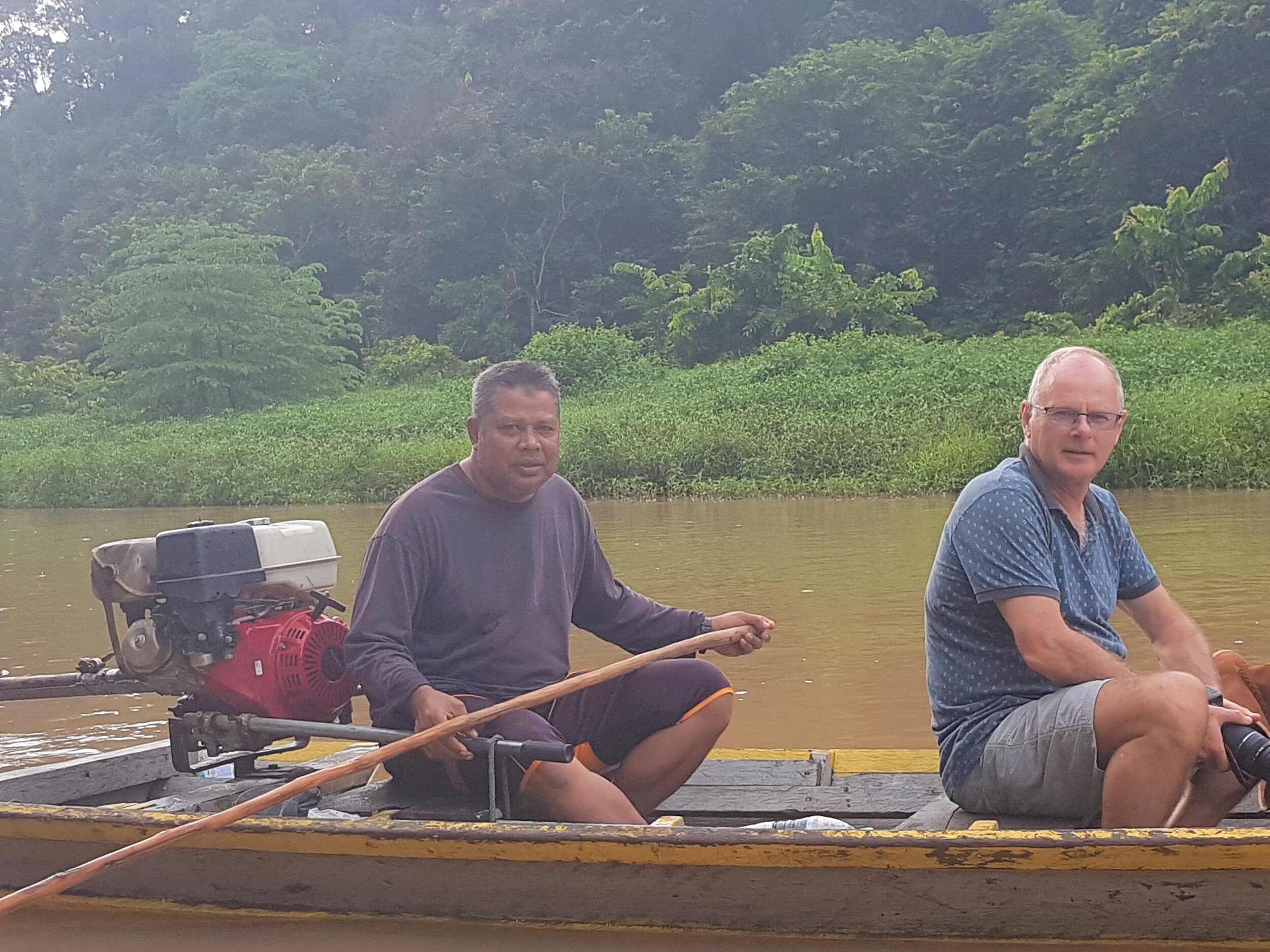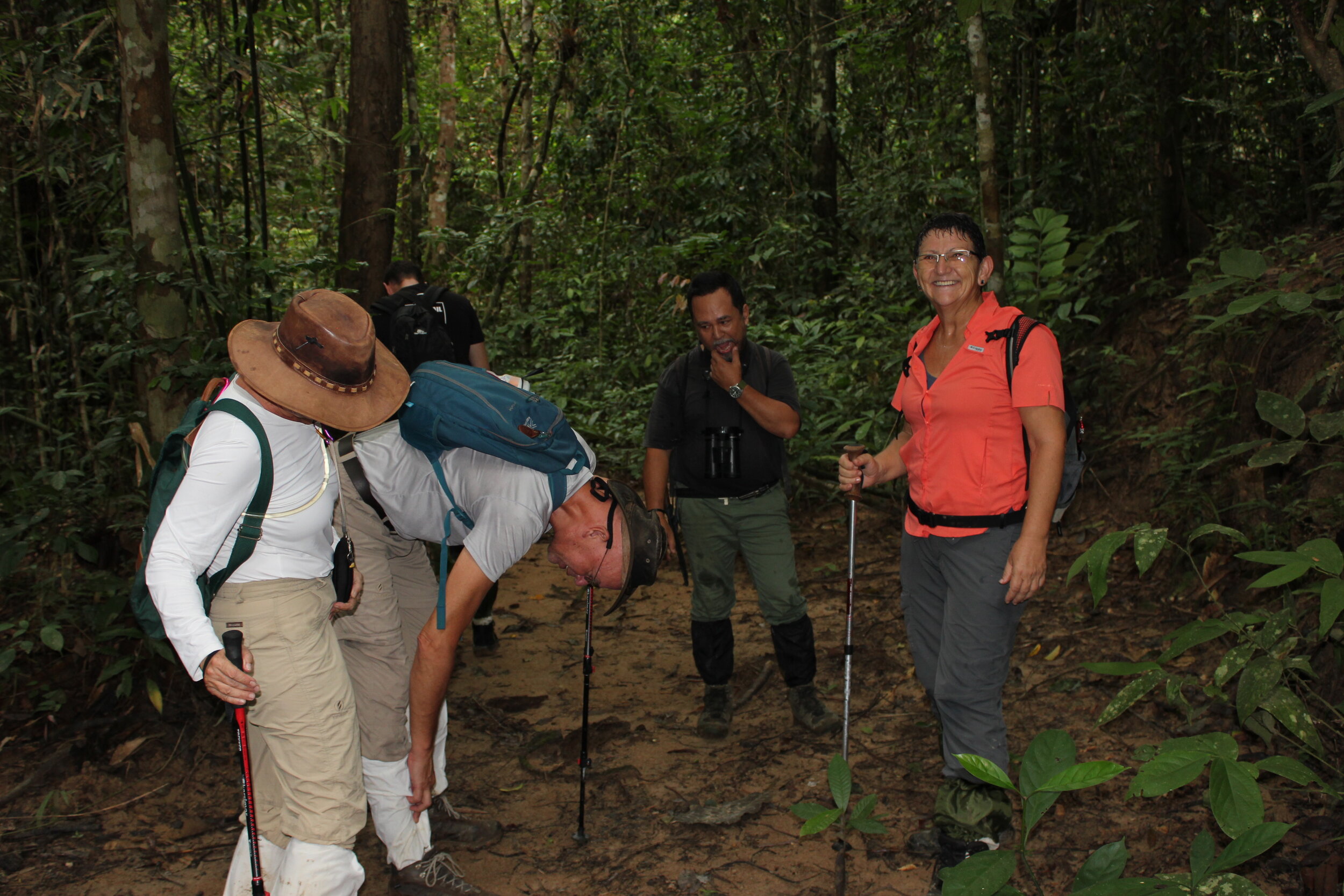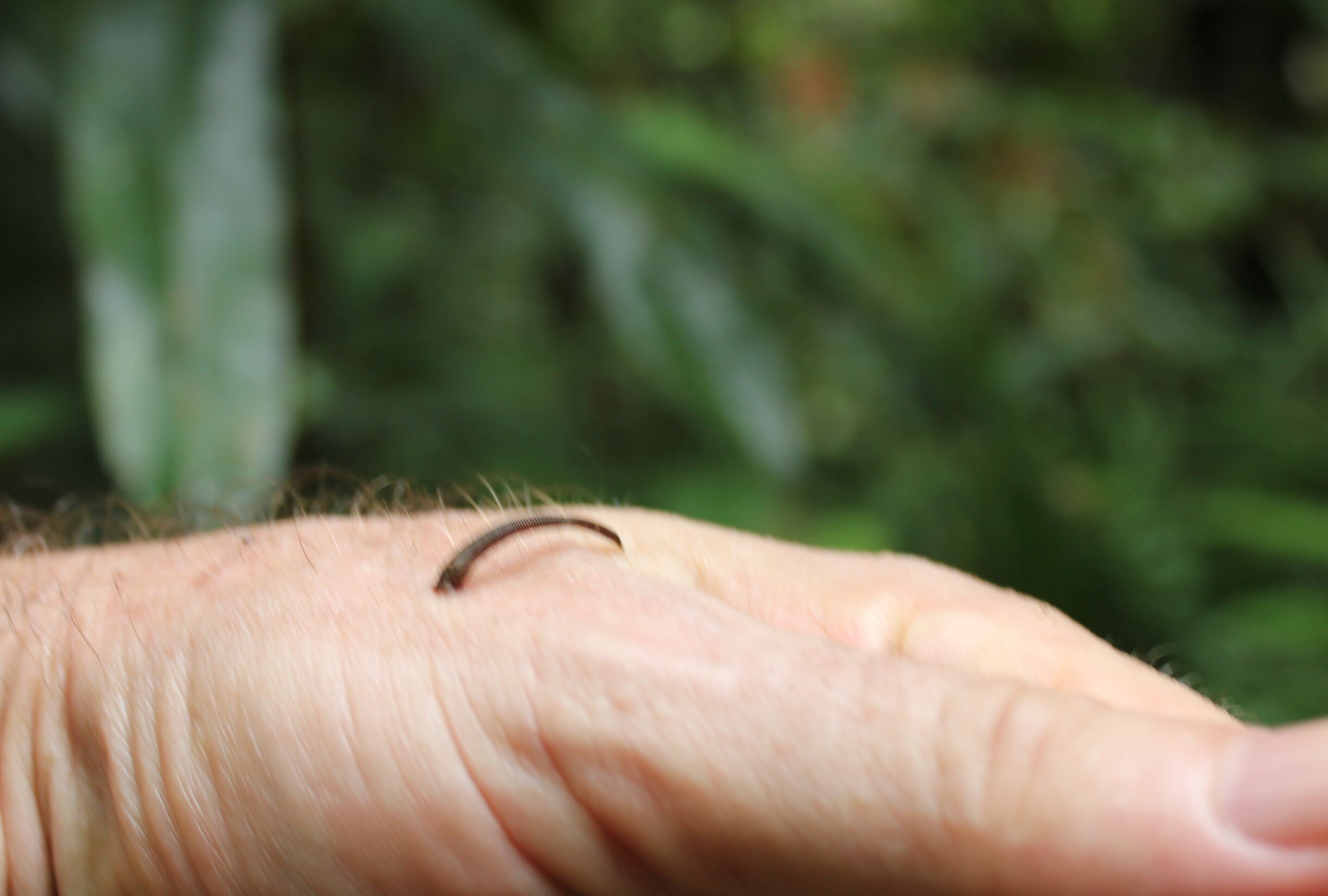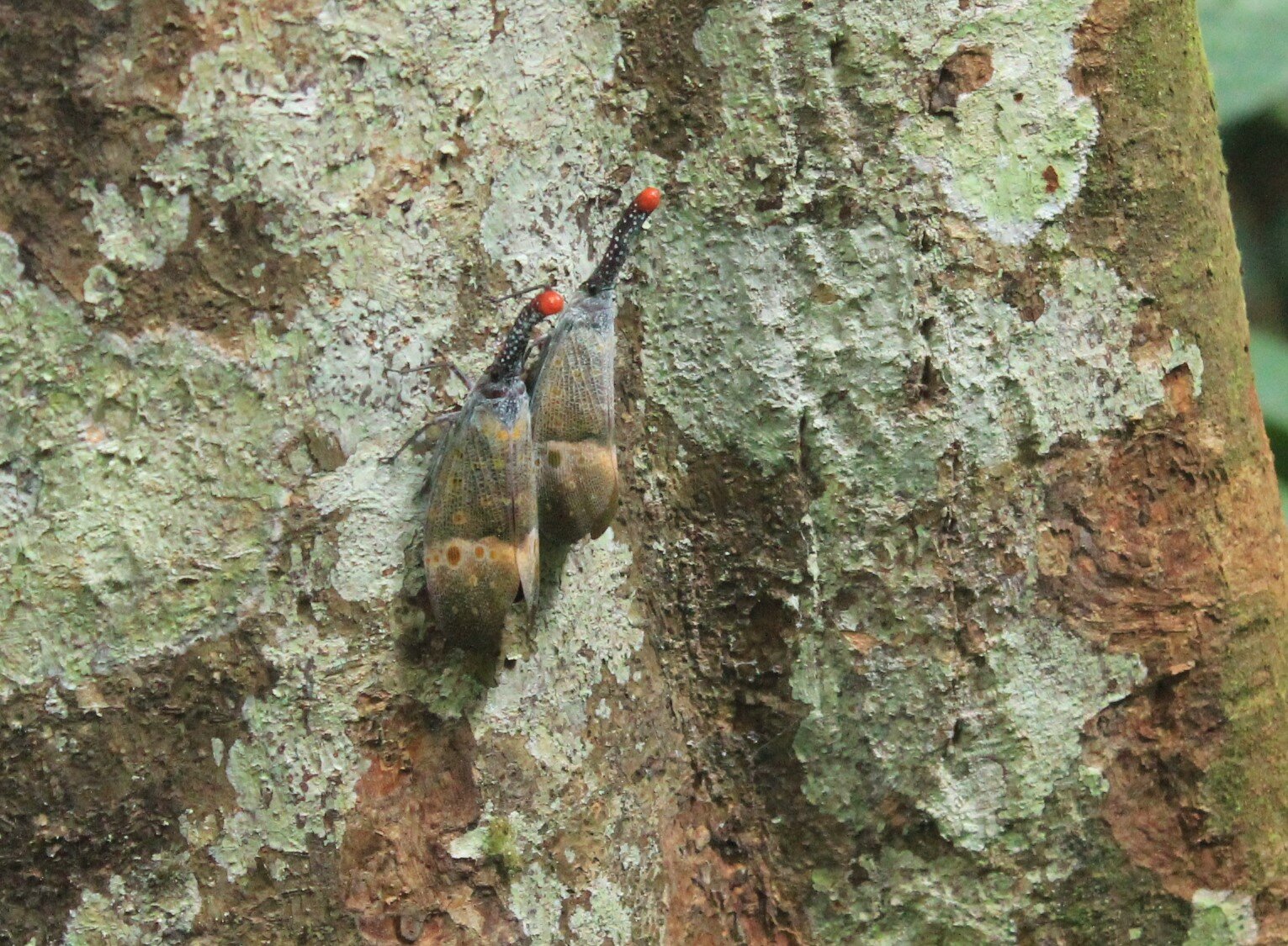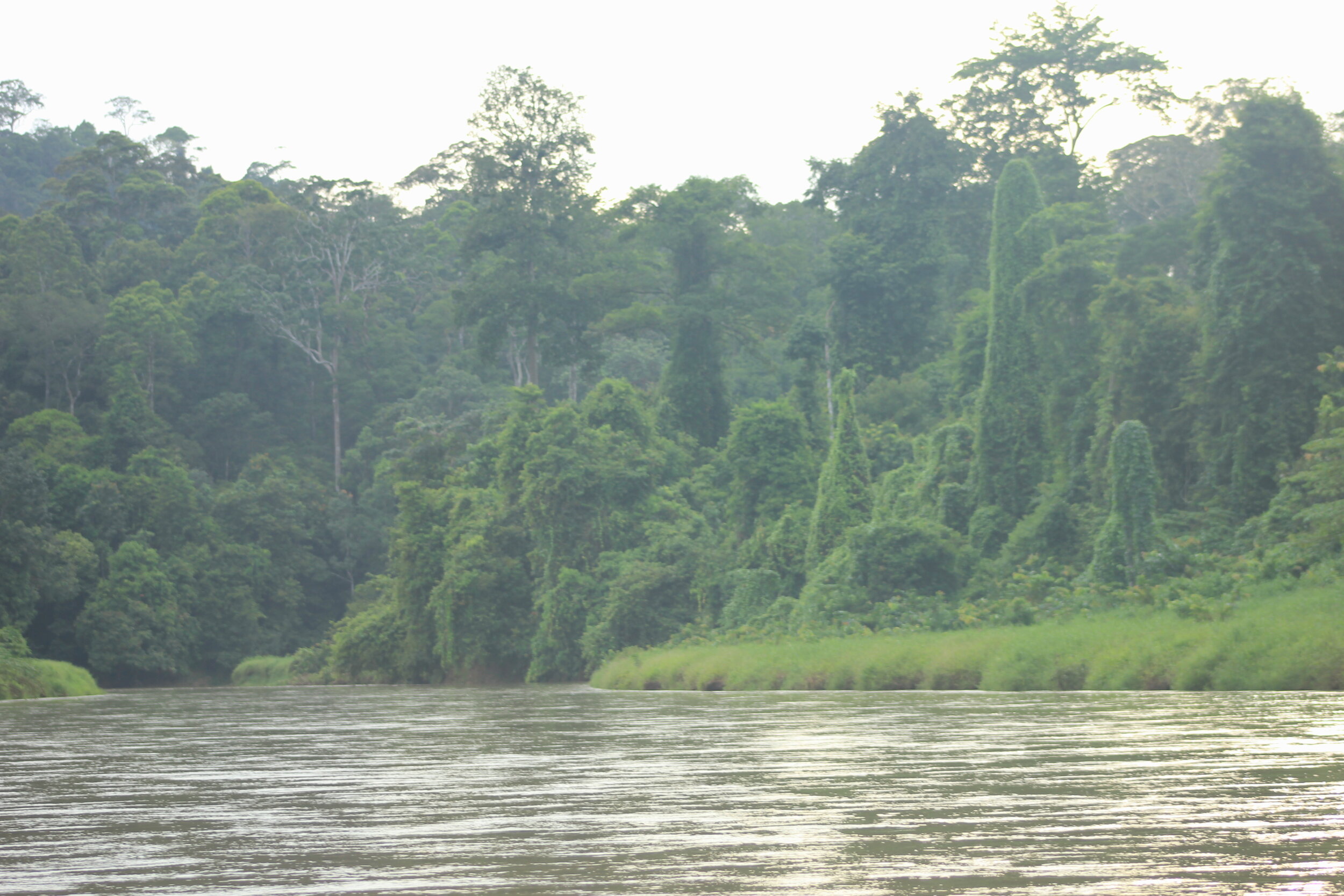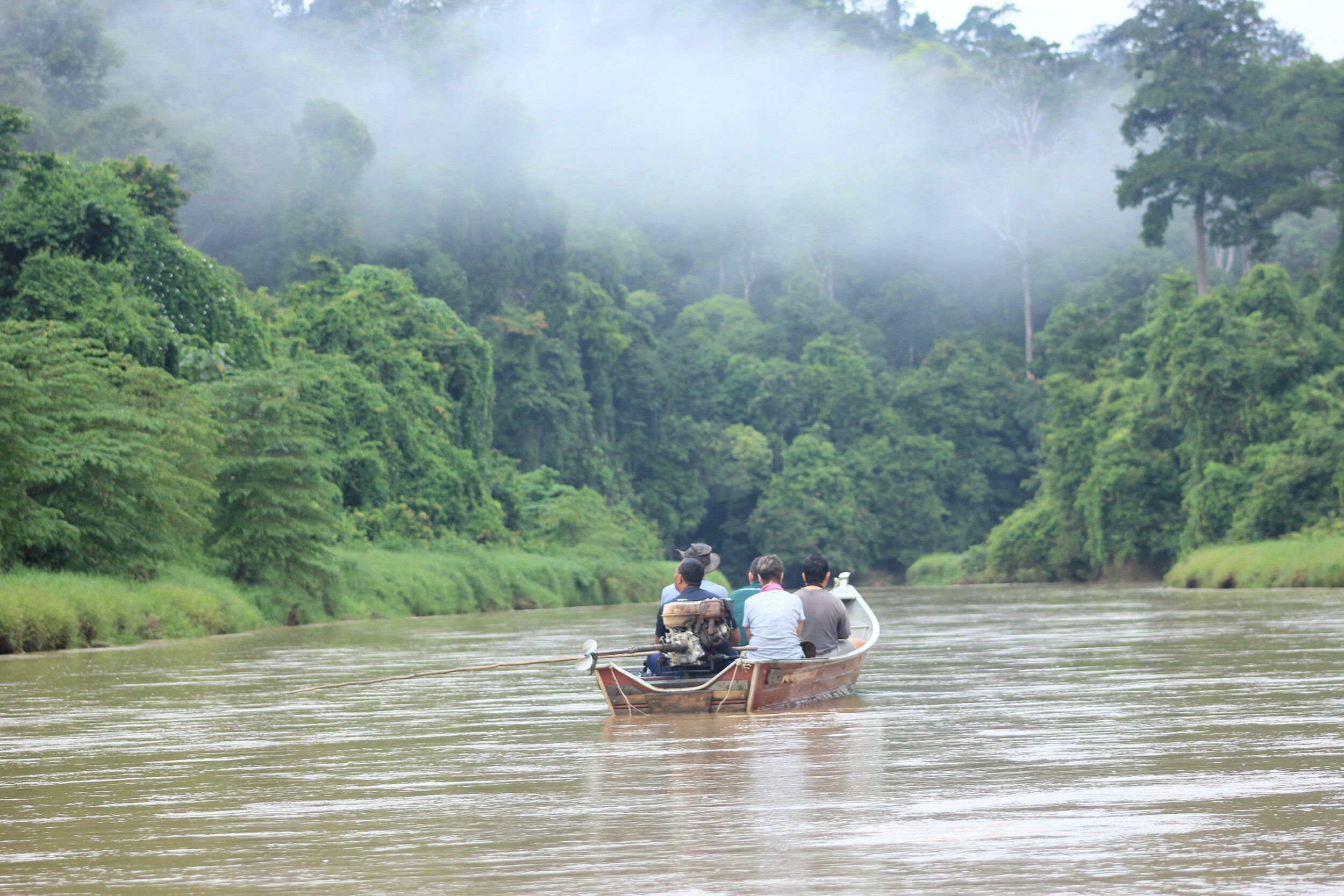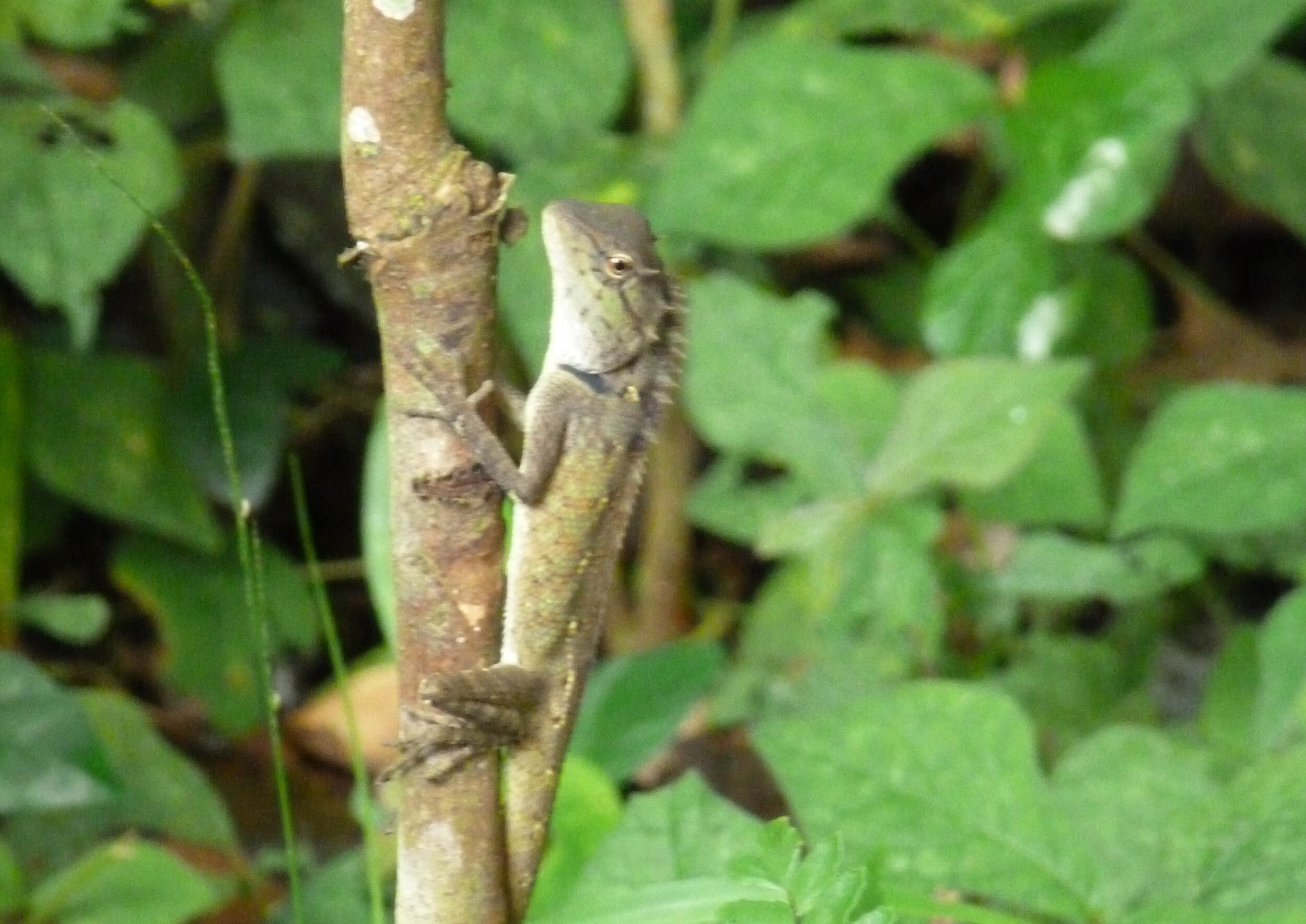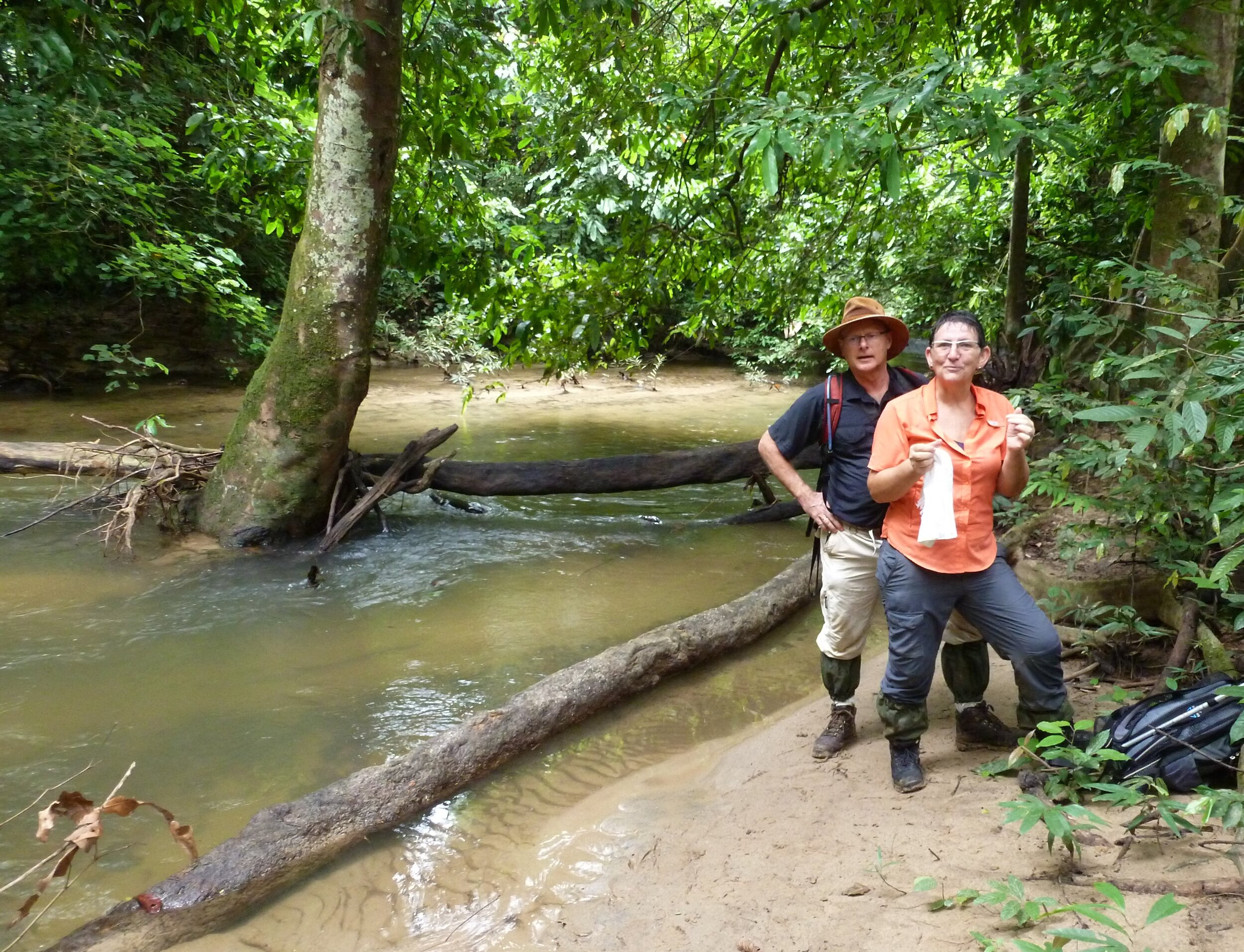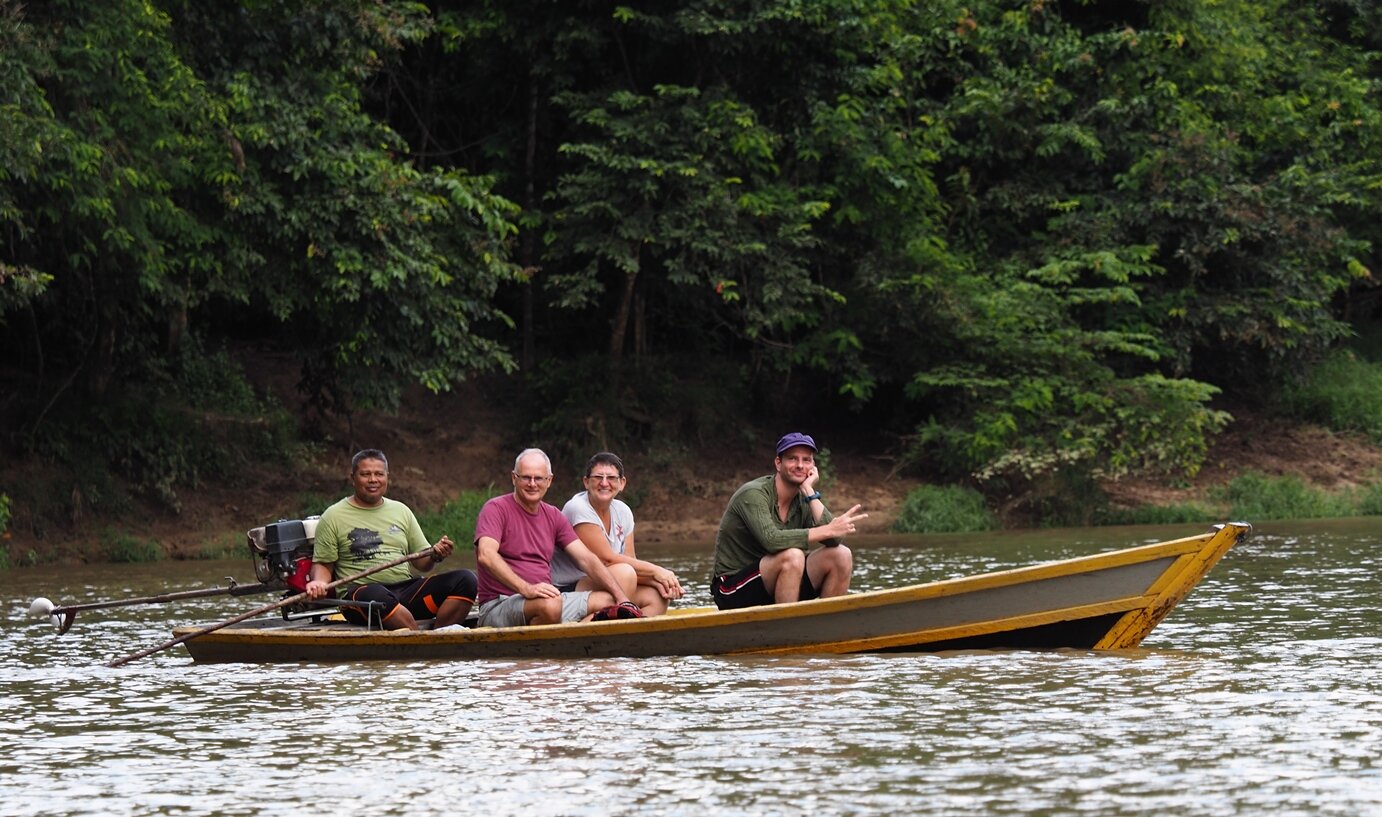Perched high on a branch a fish eagle looked at us drifting down the murky Muda River. The road to the Ulu Muda rainforest cut through thick forest. It is an isolated and hidden away place close to Malaysian -Thai border. At a small jetty Francien and I boarded three wooden longtail boats together with our friends Pamela and Berry and two other guests and crossed the winding Muda Lake. The last stretch we headed up the brown coloured river. Uncertain what to expect, after 90 minutes we arrived at the Earth Lodge.
The camp had 15 basic huts, no electricity (except a few hours in the evening when the generator was turned on), forget about Wi-Fi and phones. Shower water ran straight from the river. The food in the kitchen was kept cool in boxes filled with ice. Hymeir, manager of the lodge, passionate conversationist and our expert guide had a satellite phone in case of any emergency. Being a real eco facility, we were not allowed to use any insect repellent, bring no plastic and take back everything we brought in.
We felt we had arrived in the middle of untouched wilderness: cut off from the outside world, around the camp only thick undergrowth, 40-meter high Dipterocarps canopy above. There was stillness yet we heard the sounds of cicadas, birds, monkeys and squirrels scurrying in the foliage. It was damp and large leaves kept falling mysteriously from the trees.
The night temperature was around 22 C, so we slept comfortably underneath our mosquito nets. We got up the next morning before sunrise and it was pitch black outside. The cool morning air smelled musty and as daylight broke, I spotted a group of long-tail macaques high in the trees above our hut. The forest woke up with the mournful calls of the langurs. It sounded as if they were competing against each other. We fueled up on coffee, put on our leech-socks, donned our backpacks carrying plenty of water and started our first trek in the deep jungle. Most of the day we could hardly see the sun, not because it was not shining, but the canopy was so dense. The only open spaces we might be able to see larger animals was along the river, the saltlicks and a few clearings. The five of us followed Hymeir as he used his panga to clear the barely visible tracks. We crossed streams, trudged in deep mud, up and down hills. Decaying branches, vines and gnarled roots twined across the floor.
We were on alert mode to detect any signs of animals like deer or elephants. There were many tell-tale signs of these shy animals like tracks on the riverbanks, pulled-down trees blocking our path and fresh dung.
’In the forest you have to learn to listen, because it is difficult to see the animals.' Hymeir pointed out to us and continued: ‘Here you see with your ears.’.
We spotted a wild boar and after three hours reached a limestone cave. Inside we saw snake skins on the cold and wet slippery floor and bats flying in and out undisturbed by our presence. On our way back to the camp we rested under a Maranti tree which exuded white resin, which is used to water-proof boats.
Hymeir showed us wild ginger, medicinal plants, strangling fig trees wrangled around host trees which will eventually die, a spot where Great-Argus pheasants danced to get a mate and the tiny Lantern bugs. We looked at some brightly coloured fungus of which the hairy bowl mushrooms for me personally was the most memorable. Dare I say it, too many things to remember. Before we reached the camp we stopped at a tree where a Sun bear had taken out a bee-nest in the trunk.
The next day we stood under a 80-meter high Tualang tree. In its crown there were wild beehives and the locals built a rudimentary ladder to climb up to harvest the honey once a year.
At one saltlick (a Sira = ground containing salt and other minerals eaten by herbivores) there was a hot-water mineral spring. The 80 C water made the area steamy, so much as to fog up my camera and glasses. I ate white algae which grew in this water, tasting like egg-white. There were animal tracks everywhere: Sambar deer, tapir, Barking deer, elephant, wild boar, porcupines, Mouse deer and large birds.
Again, the trails were challenging, sometimes hard to recognize: soggy tracks overgrown with roots and tangled lianas, moss covered rocks, steep slippery slopes, thorny and wet undergrowth. Raw nature!
It was humid, stifling and wet. All our clothes were drenched in our own sweat and impossible to dry. You can imagine how we smelled after a few days! This was not for the non-adventurous people. In and around our huts we saw a 30-cm long Forest-gecko, centipedes, ants, forest-rats and even a poisonous Huntsman spider.
In the evenings we drifted silently down the river in our longboats with the engines switched off, camera’s ready to shoot, looking for wildlife on the banks of the river. So peaceful yet overwhelming, realizing that we have no chance to survive on our own in this impenetrable forest. The last two days we also did an early morning ‘cruise’ down the river. We saw monkeys, hornbills, eagles, kingfishers, water monitors, a snake swimming in the water, butterflies just to mention a few. But the deer and elephants remained elusive.
Did I mention the leeches? The many animals in the forest attract these bloodsuckers! We felt something on our arms, legs, necks and inside our shoes and tried to remove them only to find that they did not come off easily. We had to flick them off as they tried to re-attach to us wherever they could. And that fast! I can see you crinch at the thought of having those worms stuck to your body and the resulting bleeding afterwards, but believe me, we did get used to that after the first day of hiking. These pesky parasites are simply part of the forest experience.
‘All right’ you say. ‘I get it. Why do you still enjoy all this?’. It is this surreal feeling of being so close to nature. Mother Nature seems to be in charge here. We felt isolated, so much as that after one day we lost our sense of time. Not to forget, this nature is so peaceful. Francien and I felt humbled by this experience.
These few days gave us a glimpse of what untouched wilderness looks and feels like. It was impressive to learn that to this very day new species of plants and animals are being discovered here. Researchers take plant samples, set up motion-sensor cameras along animal trails and analyse pharmaceutical properties of plants in some of the primary jungle.
Allow me to compare this with our African safari experiences. - Here we did not see, but rather heard, smelled and spotted animal tracks. The forest simply was so dense. We heard langurs loud and clear, but did not see them because they stayed on top of the canopy, woodpeckers close-by but invisible, fresh elephant tracks without seeing any, all kind of birds which Hymeir could identify by their exotic sounds. I learned a lot about the rainforest, but it remains a mystery.
Prove that this resort has indeed a small environmental footprint was the fact that the monkeys did not come and snatch food away from us nor got into huts or makan area to look for food, because they did not know the habits of people.
But for how long? Environmental challenges are looming: there was still sporadic logging in the deep forests, occasional poaching, we saw a few plastic bottles floating in the river, fishing nets, the noise of the few fishing boats passing by and the hum of our generator in the evenings. Let’s hope we will be able to protect this wilderness for future generations.
You and I know that humans are the biggest threat to this fragile ecosystem and therefore, for what it’s worth, I did not want to tell anyone about this unique experience. Are you glad I didn’t?


